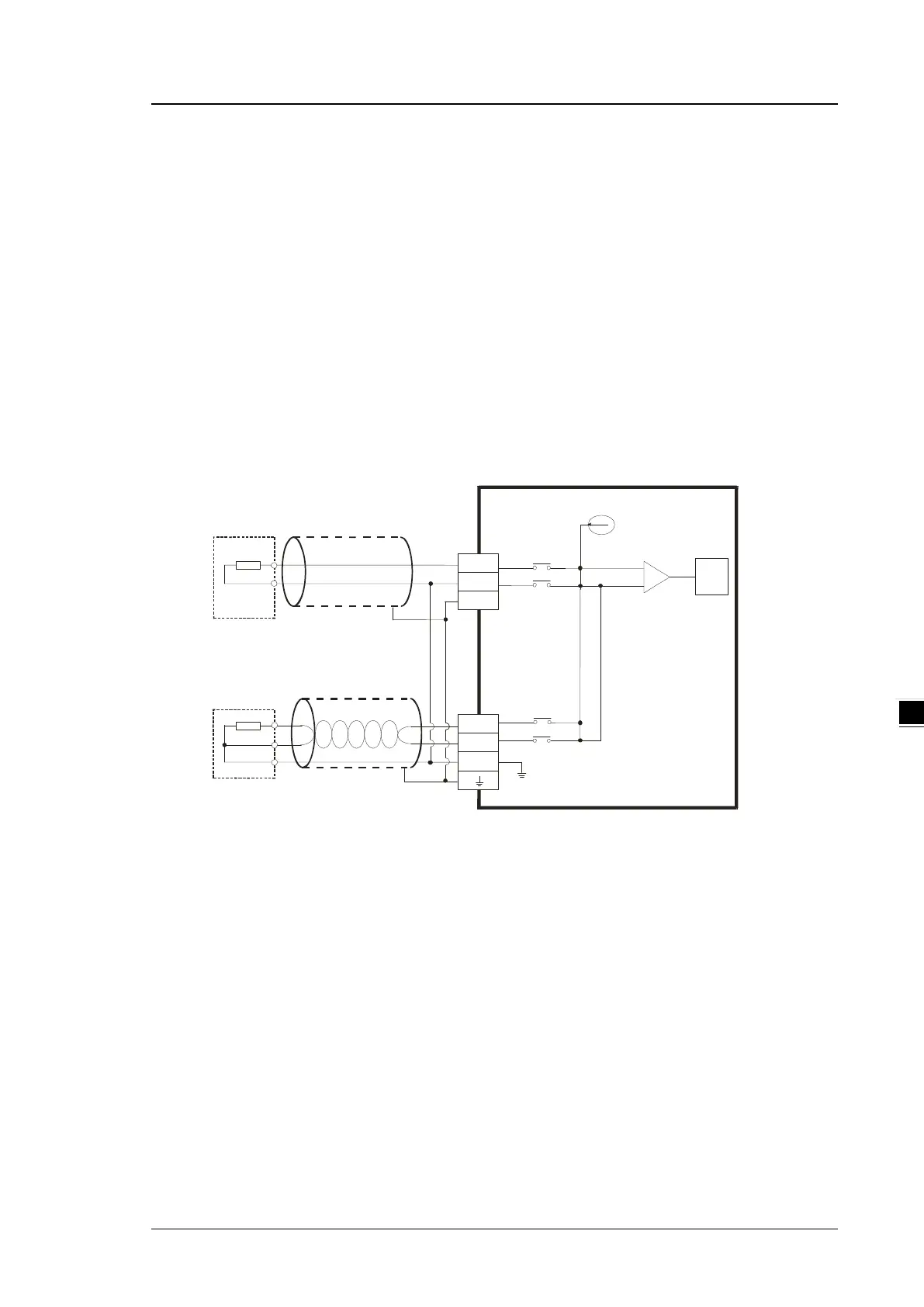Chapter 6 Temperature Measurement Module AS04/06RTD
6- 19
*1. Use shielded twisted pair cables for temperature sensors, and keep them away from power cables
and other cables that generate noise.
*2. If using two-wire temperature sensors, Ln- and In- must be short-circuited (where n is between 1–4).
*3. There are two different internal excitation currents. If you are using a Ni100 temperature sensor, a
Pt100 sensor, a JPt100, a Cu50/Cu100, or a 0~300 Ω resistance sensor, the internal excitation
current is 1.5 mA. If you are using a Ni1000 temperature sensor, a Pt1000 temperature sensor, a LG-
Ni1000 sensor, or a 0~3000 Ω resistance sensor, the internal excitation current is 0.2 mA.
Note: When using a three-wire temperature sensor, the cables should be the same length (less than 200
meter) and with a resistor less than 20 ohm.
(2) AS06RTD-A
Ni 100Pt1 00 ,J Pt1 00 ,
Cu 5 0, C u100 /
Ni 1000, P t1 0 00 ,
LG -Ni10 00 *3
,
AD C
A G
IN A
CH1
2-Wi re
CH 2
3-Wi re
L1 +
L 1-
0~ 300
Ni100 /Ni1000/ Pt100/Pt 1000
Cu50/C u100/JPt 100/ LG -Ni1000
Ω , 0~3000Ω
L2+
L2-
I12-
Shielde d c able 1*
Shielde d c able 1*
SLD
*2
*1. Use shielded twisted pair cables for temperature sensors and keep them away from power cables and
other cables that generate noise.
*2. Terminal “I12-“ indicates “ I1- & I2-“, terminal “I34-“ indicates “ I3- & I4-“, and terminal “I56-“ indicates
“ I5- & I6-“. If you use two-wire temperature sensors, Ln- and In- must be short-circuited (where n is
between 1–6).
*3. There are two different internal excitation currents. If you are using a Ni100 temperature sensor, a
Pt100 sensor, a JPt100, a Cu50/Cu100, or a 0~300 Ω resistance sensor, the internal excitation
current is 1.0 mA. If you are using a Ni1000 temperature sensor, a Pt1000 temperature sensor, a LG-
Ni1000 sensor, or a 0~3000 Ω resistance sensor, the internal excitation current is 0.2 mA.
Note: When using a three-wire temperature sensor, the cables should be the same length (less than 200
meter) and with a resistor less than 20 ohm.

